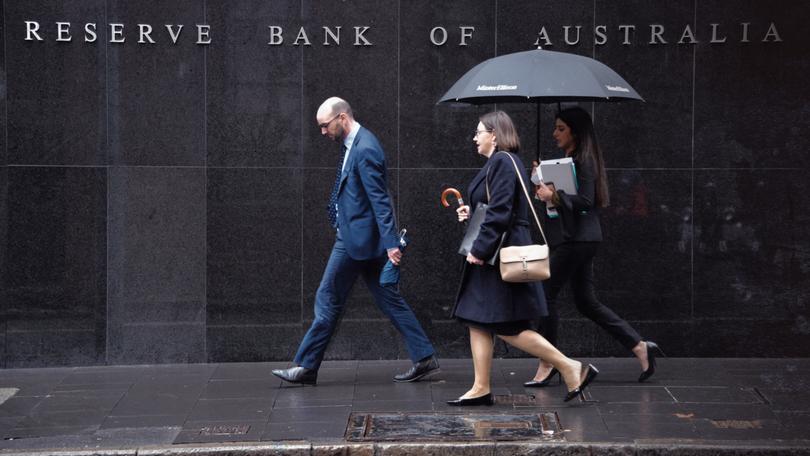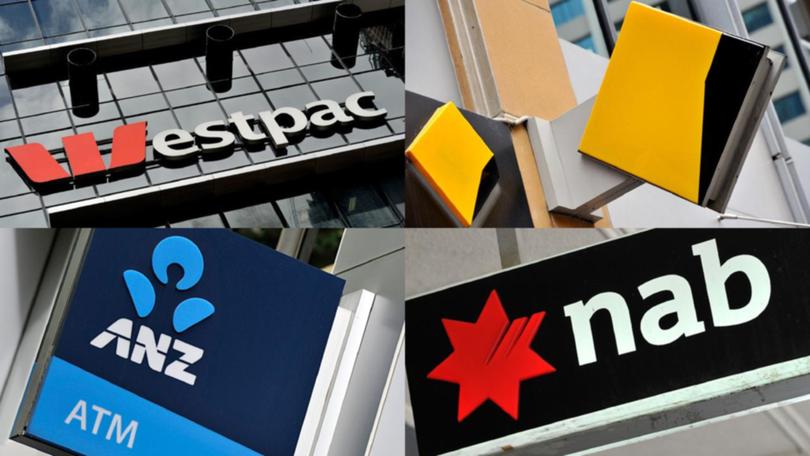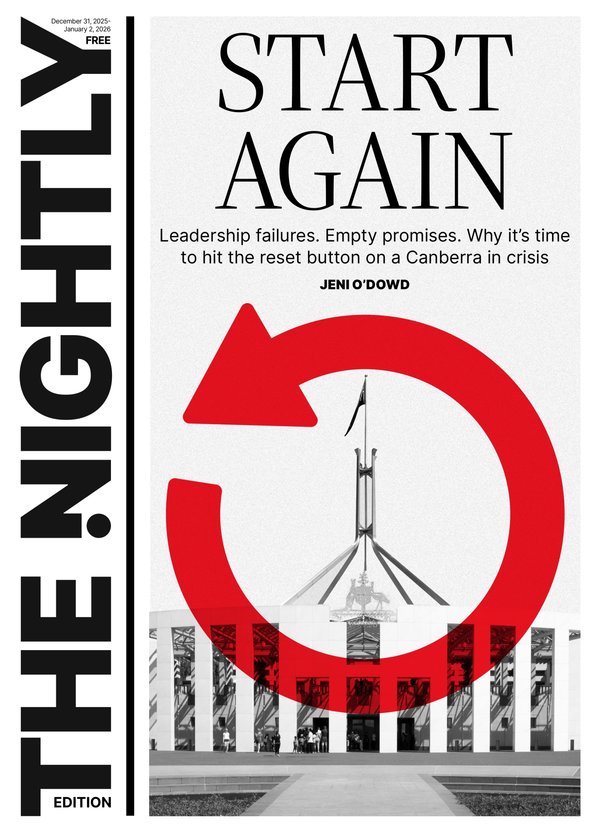RBA interest rates: Live updates from the Reserve Bank of Australia’s August board meeting

What a difference a few days can make, eh?
This time last week, homeowners were starring squarely down the barrel of another interest rate rise — the first since November last year. Listen carefully and you could almost hear the turning of the screws.
The tone of Reserve Bank governor Michele Bullock had changed over the past few months and the frustration had been clear — inflation had come down from its peak of 7.8 per cent in late 2022 but was proving more difficult than first expected to corral back within the central bank’s 2 to 3 per cent target range.
Then came last Wednesday’s welcome news that the RBA’s preferred measure of rising prices — the consumer price index’s trimmed mean — had fallen. Only slightly but enough for experts to say the board could ease the finger off the trigger.
Two days later came the release of US data showing an unexpected jump in unemployment to a near three-year high of 4.3 per cent and — along with it — fears of a dreaded hard economic landing and (sharp intake of breath) a recession at the epicentre of the global economy.
Then, just as the RBA was warming up the sausage rolls yesterday for a mid-morning snack on day one of its two-day meeting came the local share market’s reaction. Investors bolted for the door faster than Freeloader Freddie when it’s his turn to shout a round at the bar. What a bloodbath — a fall of 3.7 per cent and the biggest single day fall since May 2020. A cool $160 billion has disappeared over two days’ trade.
For homeowners, it’s a comeback story for the ages. Beaten, battered, bloody and bruised ... but still standing, just holding on and desperate for the bell.
It’s Rocky, but the untold household budget version where Balboa emerges defeated from the bank manager’s office only to return minutes later with a missing $1000 for the mortgage he found stuffed under his hat and a barely-coherent mumbled threat to take his business across the street. Rematch? Don’t want one.
And when you add it all up, those are some pretty big nails hammered into the coffin of a rate rise. Dead. Buried. Where’s the wake?
Homeowners will live to fight another day with one eye fixed on the future, just waiting for a little mortgage relief. That’s still a ways off. December, some say. More likely February next year ... and only it if proves true that households will choose to bank their July 1 tax breaks and savings from power bill credits instead of spending it.
But, just like Rocky, there’s always another fight on the horizon.
“All I wanna do is go the distance.”
Amen, brother.
Key events
06 Aug 2024 - 12:57 PM
RBA stuck in ‘holding pattern’
06 Aug 2024 - 12:52 PM
‘Making progress’ but Chalmers warns of global volatility
06 Aug 2024 - 12:41 PM
When will inflation be back within RBA’s sweet spot?
06 Aug 2024 - 12:31 PM
And it’s a hold!
06 Aug 2024 - 12:07 PM
‘Not out of the woods yet’
06 Aug 2024 - 11:42 AM
Should you be jumping into the rental market?
06 Aug 2024 - 11:20 AM
Stressed and at breaking point: The sad reality for many homeowners
06 Aug 2024 - 11:07 AM
So, what caused yesterday market collapse .. and is it time to panic?
06 Aug 2024 - 11:02 AM
Time to stick it to your bank manager
06 Aug 2024 - 10:35 AM
Could Australia follow US into risk of recession?
06 Aug 2024 - 10:26 AM
Hold likely but RBA to keep hawkish tone
Should you be jumping into the rental market?
So, you’re among the lucky few who’ve saved wisely or bagged a massive pay rise and you’ve got plenty of cash to splash?
What better way that to take advantage of Australia’s housing shortage, snap up a rental and watch the money pour in. Good for you, more credit to you and your financial health.
Yields on investment properties are enough to make a homebuyer watching their own home value surge want to become a landlord.
But how much is luck versus skill? Here’s a few things to watch before you dive in.
The countdown is on!
An hour to go and we’ll know which way the wind it blowing - batten down the hatches or breath a sigh of relief.
Death and taxes may be certainties in life ... not so the path of the oficial cash rate.
Stay tuned.
Stressed and at breaking point: The sad reality for many homeowners
While the RBA is widely expected to hold fire on a rate rise and keep the cash rate at 4.35 per cent, the possibility will almost certainly be discussed.
But Canstar warns any unexpected hike could forced borrowers to fork out 45 per cent of their before-tax income on loan repayments, leaving little left over for insurances, bills and other living costs.
Stressed borrowers who purchased right before the rate rises in 2022 at the top of their budget are dangerously close to breaking point.
... according to Canstar’s latest research. It shows a dual-income couple earning a combined average income of $184,060, who maxed out their borrowing capacity and purchased a home in early 2022 before recent interest rate rises, could now be contributing approximately 43.9 per cent of their before-tax income to repayments.
“While the latest quarterly inflation figures were in line with expectations, inflation remains high and any slip of the gains to bring the consumer price index within the Reserve Bank’s preferred 2 to 3 per cent target band could cast another rate rise on borrowers.,” the comparison website said.
If the RBA decides on a cut (sorry, that’s highly unlikely) a mortgagee with a loan of $1.17 million at 6.62 per cent could cut their repayments by about $200 a month.
So, what caused yesterday market collapse .. and is it time to panic?
Any number of suspects could be blamed for Monday’s market beatdown, ranging from worries about the economy and seemingly slow-footed response from the Federal Reserve to the unwind of a popular global currency trade and concerns over corporate earnings.
Those all played a part in some shape or form, and each helped tell a story of a shifting investing landscape that likely has not fully played out.
Still, many on the Street doesn’t think it’s time for the Fed to take any drastic actions.
Even with the rising unemployment rate and weakening manufacturing picture, most other economic indicators are good and now is not the time for investors to make major changes
Read the full story here ...
Time to stick it to your bank manager
The US Federal Reserve may be tipping a September rate cut but we’re unlikely to hear about one anytime soon.
So where does that leave you and your mortgage?
Compare the Market’s David Koch says homeowners can’t afford to wait for a move by the RBA, with recent analysis of some of the rates available from the Big Four banks showing the average difference between new customer and exisiting customer rates at a whopping 1.96 per cent.

“Therefore, a person with an owner-occupier $750,000 loan could be saving $1008 a month when they switch from a rate of 8.54 per cent to 6.58 per cent,” he said.
“I’d encourage people to be sceptical of their home loan interest rate and to compare it against what their lender and other lenders are offering new customers.
“If you’ve been with your lender for more than a couple years, there’s a good chance you’ve fallen on a higher back book rate and are paying more than you need to be.”
Why so sticky?
We’ve been hearing it for months now - and it’s bound to rear it’s ugly head once again today.
“Inflation is sticky.”
That brings to mind all sorts of images best left to the imagination.
So, what is it? The answer’s not as deep and meaningful as you may think.
First of all, it’s not new. We’ll spare you the full synopsys of a 40-plus page paper the RBA published on the subject way back in 1995 and boil it down to this ...
Sticky inflation happens when prices fail to adjust quickly to changes in supply and demand, leading to persistent inflation.
There you go, easy. It’s also important to know that it’s far more “sticky” when prices fall rather than rise.
We know consumer demand is falling across the retail and discretionary spending spectrum as households have tighened their belts each time interest rates have risen.
So why are some prices still “sticky” and keeping inflation higher than expected?
That’s a whole different lesson and will take a few sock puppets and a few Irish coffees to explain.
Super funds whacked from yesterday’s ASX wipe-out
Australian superannuation accounts are set to tumble as share markets plunge amid growing recession fears in the US and Japan.
More than $100 billion was wiped off the value of Australian shares in the Monday rout, taking total losses to upwards of $160 billion over two days as markets plunged globally.
Super funds directly or indirectly own about a quarter of the shares and trusts traded on the Australian Stock Exchange.
And with more than 60 per cent of retirement savings exposed to Australian and overseas shares, fund managers fear the US and Japan market plunges will create a global bear market.
Read the full story here
Could Australia follow US into risk of recession?
In times of chaos, we turn to calmer voices ... specifically, the dulcit tones of AMP’s Shane Oliver.
Noting yesterday bloodbath across global equity markets, Oliver puts the chance of an Aussie recession at 50 per cent.
The following factors worry our money man:
• Interest rates have gone up by more in Australia than in the US as measured by the mortgage rates people actually pay.
• Household debt servicing costs are now at a record share of household income in Australia (which is not the case in the US), and Australia has far more overvalued housing than in the US.
• Australian real household spending has slowed to a crawl.
• The boost to Australian economic growth from record population growth looks set to slow over the year ahead by at least one percentage point. This will more than offset the boost from tax cuts.
• Like in the US job vacancies have been falling here for two years and this will likely soon feed through to a sharp slowdown in jobs growth and rise in unemployment which is already up to 4.1 per cent from 3.5 per cent.
“Because central banks never know when they have raised rates enough to control inflation they often go too far – resulting in recession,” he says in a note released today.
”This was the case prior to recessions in Australia in the early 1980s and 1990s.
“While the RBA still faces inflation that’s too high, given the US experience it should now be giving consideration to a cut in interest rates as it now risks much higher unemployment and inflation falling below target.”
Hold likely but RBA to keep hawkish tone
Higher jobless numbers have sent American investors into a panic but local economists expect the Reserve Bank is likely to leave rates unchanged today.
Moody’s Analytics economist Harry Murphy Cruise said Australia’s official cash rate would likely stay on hold with the RBA “running their own race”.
But the central bank would have a hawkish tone and signal that fighting inflation remains top priority.
More than $40 billion of cash was flowing into the economy through Federal and State tax cuts and cost of living packages, Moody’s Analytics has estimated.
That could boost demand and the central bank will be eager to stop punters preempting lower rates and spending the cash.
“I still think the risk is that inflation is going to be tricky to get back into the RBA’s target band,” Mr Murphy Cruise told The West Australian.
Originally published on The West Australian
